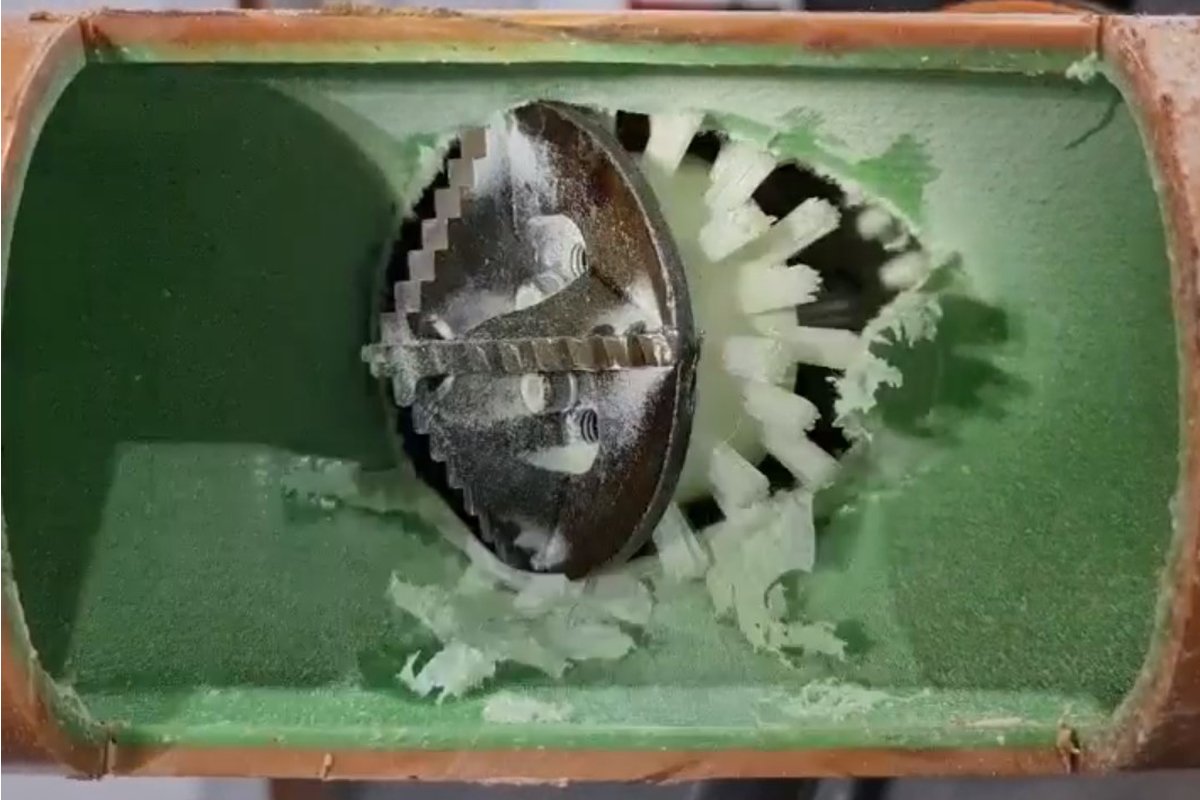
Finding an Effective Solution to Eliminate I&I
A town located just 14 miles north of Philadelphia may not be as rich in history as its neighbor, but it has made its own mark in history. Warminster Township, Pennsylvania was originally settled by English and Scotch-Irish colonists after William Penn received a grant of land in the area from King Charles, IIlinois.
During World War II, the U.S. Navy acquired an industrial site here and opened a Naval base in Warminster. It served as a weapons development and airplane testing facility. The military base remained in operation until it closed in 1996. In the 1960s the naval site became adapted as a training center for the Mercury, Gemini and Apollo space programs. The facility also developed a prototype “black box,” best known as the indestructible flight recorder of cockpit conversations and information in the event of a crash.
Today, Warminster has a population of approximately 34,000 residents covering an area of 13 square miles. The township manages its own water, sewer and storm drainage systems. There are 15 pump stations throughout the system, according to Bob Wilson, collections mechanic and Warminster’s sole NASCCO certified Pipe Assessment Certification Program (PACP), Lateral Assessment Certification Program (LACP) and Manhole Assessment Certification Program (MACP) certified employee.
Warminster, Pennsylvania has a longstanding program to address the aging infrastructure and Inflow and Infiltration (I&I) issues. They have had an I&I program in place for approximately 20 years. In the early stages of the program, they used a triage type of approach to prioritize the severe cases and repair them first. In more recent years they have used more of a grid approach focusing on specific neighborhoods and performing a complete rehabilitation program including pipe, lateral and manhole lining.

The I&I Challenge
Challenges persist due to the township’s proximity to Philadelphia, notably in managing traffic control. Additionally, the age and historical development of the infrastructure, which expanded significantly during World War II presents more complexity with the various materials that were used in construction since metals and other products were not available as they were being diverted to support war efforts. They even had concrete lids in lieu of frame and covers on many of their manholes. Manhole materials consist of concrete, brick and precast.
Solution
“Over the years we investigated and tried other technologies but could not find one that worked well for us. We did not like something that was simply spincasted from a device lower into the manhole because it did not provide consistent coverage in our structures,” Wilson stated. “We wanted something requiring a person down inside the structure so they could visually see what they were doing and where they were spraying.”
Years ago, they learned about a multi-layer lining system using polyurea. They contracted Advanced Rehabilitation Technology (ART), who is a certified installer of OBIC with offices located in Ohio, Maryland and Texas. OBIC Armor is a multi-layer liner consisting of three layers. The first layer is the adhesion layer (a 50 mils thick layer of polyurea) sprayed to the host structure, the second layer is the surfacing layer (a 400 mils thick layer of 6- to 7-lb. foam), then finished with the barrier layer (a final coating of 50 mils of polyurea).
“We are very pleased with the product and workmanship of the ART crews. Additionally, the 10-year warranty on the material and workmanship is an added bonus,” Wilson said. The foam surfacing layer not only adds some structural enhancement to the system, but it works well filling in voids and smoothing out offsets in brick manholes.
OBIC Armor lining system provides a complete monolithic coating. Due to the excellent elongation properties of the OBIC 1000 (the two polyurea layers of OBIC Armor). It is sprayed from the invert channel up to the manhole casting, where it is bonded to the frame itself. Utilizing the OBIC Armor system eliminates the need for the installation of chimney seals, resulting in savings of an additional $800 to $1,000.
Path Forward
Following the successful pilot project, Warminster Township has maintained a steady pace of rehabilitating approximately 80 to 90 manholes each year. They favor working with ART due to their satisfaction with the OBIC product and the professionalism of ART’s crews and company. Should any issues arise, ART consistently honors its warranty and stands behind its workmanship.
PJ Rohrbaugh, a project manager at ART, spoke highly of Warminster Township as a customer, stating, “I really enjoy working with the employees of Warminster. They are a good customer to work for.”

Wilson shared an anecdote he particularly enjoys: when faced with a major challenge at a severely leaking manhole on the former Naval base inherited after its closure, they turned to ART. This particular manhole was leaking 73,000 gallons of water per day — an extraordinary situation.
ART was tasked with grouting the leaks and applying OBIC Armor coating, a solution that continues to perform effectively. Given that wastewater treatment costs in the Philadelphia region range from $8 to $14 per 1,000 gallons, with a median cost of $11, the repair resulted in significant savings. Specifically, the lining of the manhole saved $803 per day in wastewater treat cost, amounting to $293,095 annually.
Conclusion
Wilson emphasized, unlike some other municipalities, once they discover a product that meets their needs effectively, they remain loyal to it. During discussions involving alternative materials and technologies, they consistently pose a critical question: whether these options are backed by a 10-year warranty on material and workmanship. The response they invariably receive is a straightforward, “No.”
Mike Hoffmaster is vice president at OBIC LLC and also provided the photos.




